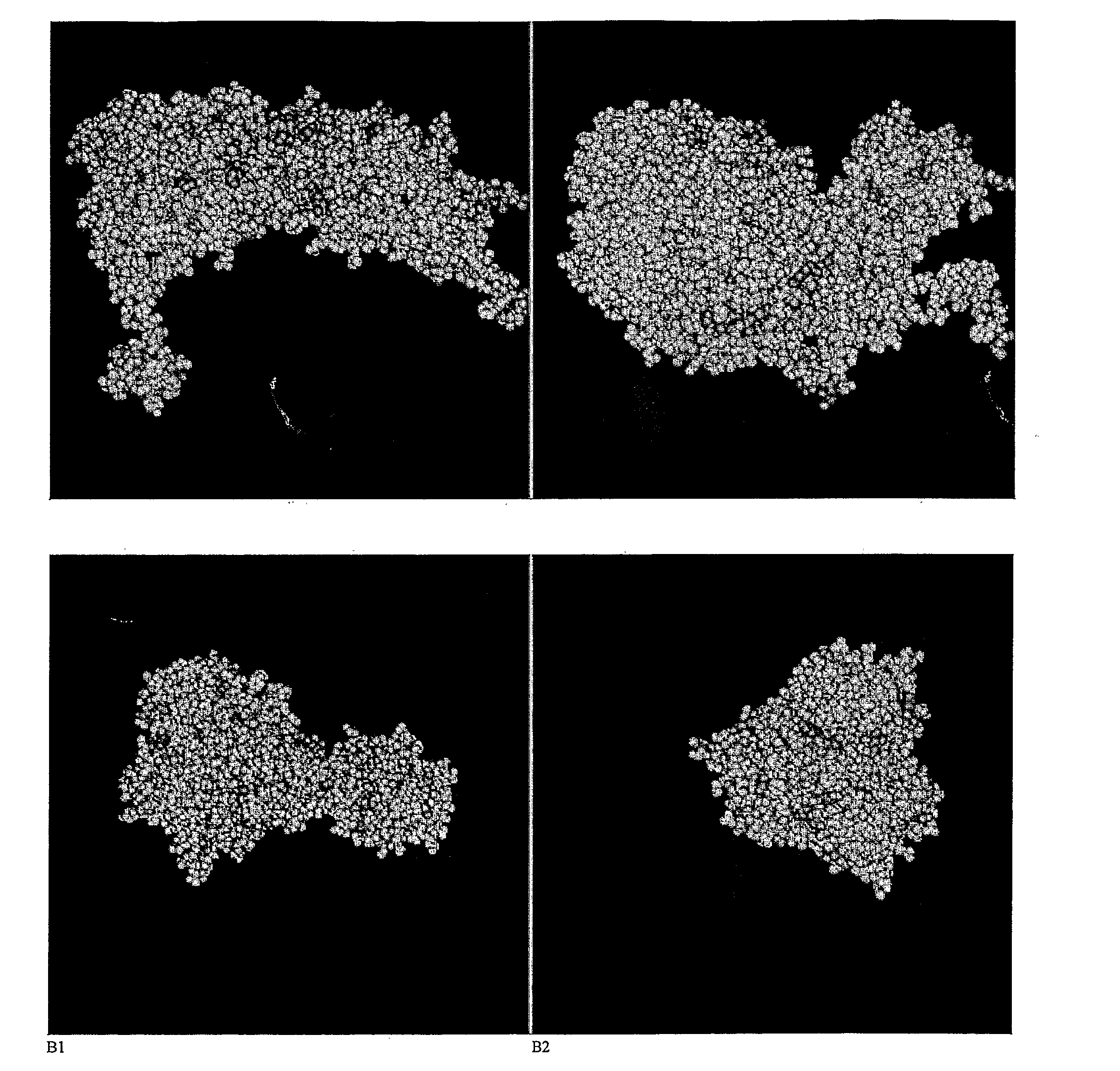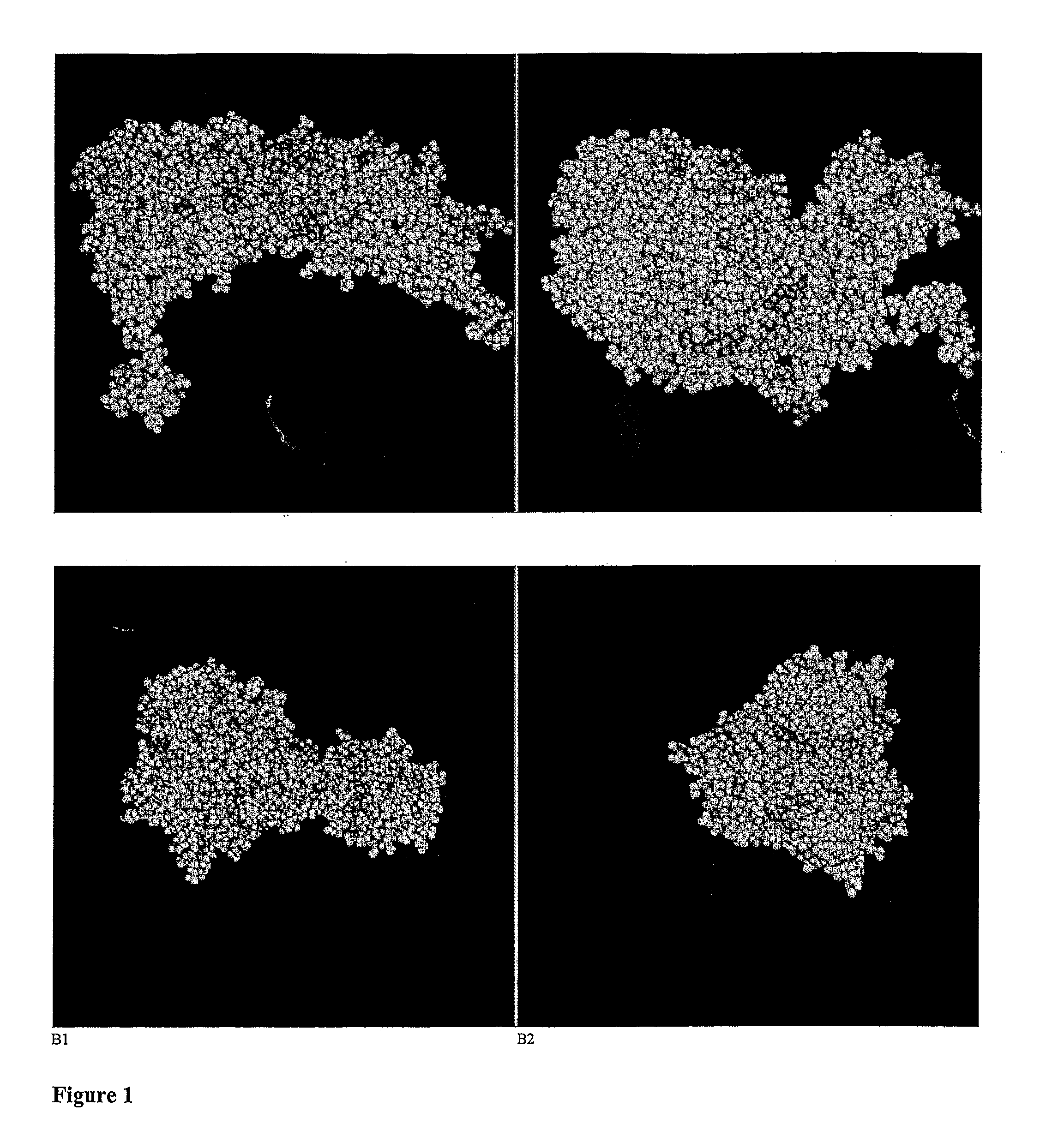Modified Virus
a technology of modified viruses and virus particles, applied in the field of modified virus particles, can solve problems such as cell lysis, and achieve the effects of reducing the risk of infection, improving the effect of treatment, and improving the viability
- Summary
- Abstract
- Description
- Claims
- Application Information
AI Technical Summary
Benefits of technology
Problems solved by technology
Method used
Image
Examples
example 1
[0193] To determine the effect of glycosylation on adenovirus transfection via normal pathways, three different glycosylated structures were produced which represent highly (6000 equivalents of sugar per available lysine residue), partially (600 equivalents of sugar per available lysine residue) and sparingly (60 equivalents of sugar per available lysine residue) glycosylated structures. This has been achieved using 4 different glyco-structures to give a total of 12 constructs. Each was purified after glycosylation to remove excess reagent. As discussed earlier the 2-imino-2-methoxyethyl-1-thioglycoside reagent will glycosylate by nucleophilic attack of the primary amino group present in the lysine side chain of all adenovirus capsid proteins. Since lysine groups are required for effective interaction of adenovirus with CAR and membrane integrins we propose level of glycosylation will be proportional to transfection knockdown. This is demonstrated in FIG. 2b where a luc...
example 2
Characterisation of Glycosylation
[0194] The adenovirus proteins have previously been characterised by SDS-PAGE.[11] By comparing the SDS-PAGE gel for an unmodified viral particle against the 12 modified types it was possible to determine where glycosylation was occurring on key capsid proteins (FIG. 3b,c). Heavily glycosylated virus showed significant protein mass differences for the Hexon, Penton base and Fibre proteins. To determine the presence of sugars a Periodic acid cleavage of diols followed by a Pro-Emerald stain (Purchased from Molecular Probes) was employed (FIG. 3a). By this stain the Hexon and Fibre proteins are easily visualised, although the Penton is less obvious. By comparing this to the coomassie stain perhaps this is not as surprising as there are different levels of glycosylation within the Penton viral sample. This coupled with a carbohydrate content close to the limit of detection may be responsible for the weak fluorescence seen. Indeed, this could indicate th...
example 3
Virus Integrity
[0198] Adenoviral capsid proteins exist as homodimers or homotrimers held together by ionic interactions which can be disrupted easily by addition of detergent such as Sodium dodecylsulphate (SDS) or guanidine chloride. We asked the question does glycosylation lead to destruction of the adenovirus capsid and / or does glycosylation lead to agglomeration? We considered this unlikely since spin column purification would remove degraded viral particles; however we had noticed smaller yields being recovered for modified particles. To fully characterise the glycosylation we decided to investigate this question using a novel approach to PicoGreen analysis, size exclusion HPLC, photon correlation spectrometry (PCS) and Zeta potential. PicoGreen analysis is routinely used to indirectly calculate the number of viral particles present in solution. It works by conjugating to DNA which can be measured by fluorescence spectroscopy. This technique has the advantage of high sensitivel...
PUM
| Property | Measurement | Unit |
|---|---|---|
| volume | aaaaa | aaaaa |
| reaction time | aaaaa | aaaaa |
| diameter | aaaaa | aaaaa |
Abstract
Description
Claims
Application Information
 Login to View More
Login to View More - R&D
- Intellectual Property
- Life Sciences
- Materials
- Tech Scout
- Unparalleled Data Quality
- Higher Quality Content
- 60% Fewer Hallucinations
Browse by: Latest US Patents, China's latest patents, Technical Efficacy Thesaurus, Application Domain, Technology Topic, Popular Technical Reports.
© 2025 PatSnap. All rights reserved.Legal|Privacy policy|Modern Slavery Act Transparency Statement|Sitemap|About US| Contact US: help@patsnap.com



